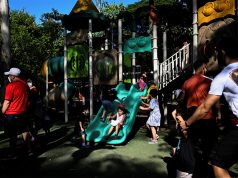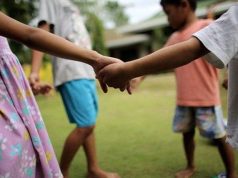
The controversial supposed online game that caused panic of many parents is likely a hoax or a coverup of the real reasons children take their own lives, fact-checking website Snopes.com said.
Based on unverified testimonies, the so-called Momo challenge involves a scary image of Momo, a woman with distorted facial features, appearing on supposed harmless YouTube videos and through WhatsApp messaging, talking to children. The character is alleged to be threatening young children into performing dangerous tasks until they harm themselves.
Online posts and some reports later linked the app to the perceived suicide of children, perpetuating fear among many parents on their children’s safety on social media.
However, David Mikkelson of Snopes perceived that it’s possible that the online posts showing screenshots of users’ encounters with Momo are fabricated.
Mikkelson cited incidents of disinformation in mid-2018 wherein deaths of minors in Argentine and Colombia were thought to be related to the game even if police had yet to confirm the causes of deaths.
“A good deal of skepticism remains that the existence of the Momo challenge may be far more hype or hoax than reality, with many critics citing the paucity of screenshots and videos documenting interactions with Momo,” Mikkelson wrote.
An article from the Atlantic related this to the Blue Whale suicide challenge in 2015, which required children and teenagers to perform extreme tasks. It similarly turned out to be a hoax.
Should the Momo exist, Taylor Lorenz wrote, the management of online platforms should have already flagged or removed the videos or games.
“YouTube confirmed that, contrary to press reports, it hasn’t seen any evidence of videos showing or promoting the ‘Momo challenge’ on its platform,” Lorenz said.
“If the videos did exist, a spokesperson for YouTube said, they would be removed instantly for violating the platform’s policies,” he added.
Furthermore, he observed that the Blue Whale, the Momo and similar online craze usually start to gain traction once their narratives get picked up by local media and then concerned parents would share the articles online to caution others.
“Actual teenagers and anyone else who lives their life Extremely Online mock them for their naïveté. Brands and influencers hop on the trend, parodying it and exploiting it for their own gain. And trolls take advantage of those who believe it’s real, often by creating and posting content that seemingly confirms parents’ worst fears,” he explained.
Momo is also not intended to scare children to begin with. It is a sculpture designed by a Japanese artist named Keisuke Aisawa, who works at a company specializing in horror film props called Link Factory.
The real title of Aisawa’s work is “Mother Bird” and it was displayed at an art exhibit in Tokyo in 2016.
It only turned into an “urban legend” when it was shared on Reddit’s horror platforms.
The bigger issues
Lorenz said that these challenges or games are just mere distractions from the larger concern of keeping children safe and secure online.
“Their automated moderation systems fail to flag inappropriate content. Their skewed content-recommendation algorithms promote extremist beliefs. They don’t protect kids against cyberbullying from peers, they milk kids under the age of 13 for money and engagement, and they promote truly gruesome content,” he said.
Meanwhile, Mikkelson pointed out that while dangerous trends do exist, person’s willingness to participate in the self-harm acts usually has underlying factors. This include bullies who jump into the bandwagon to torment vulnerable children.
“Anything that puts suggestions and images of self-harm and suicide in front of children who are already vulnerable to self-esteem and other psychological issues (including suicidal tendencies) can carry dangerous potential,” he said.
He added that parents should teach their children to be responsible to inform them of any online material that scares them.
“Perhaps the best general advice is for parents to address such issues preemptively, not necessarily dwelling on any specific rumors but advising their children to be responsible and let them know if they encounter anything in the digital realm that appears frightening or threatening,” he said.
In the Philippines, local authorities have also reminded parents to do the same given that merely taking down social media content specifically related to Momo does not guarantee overall safety.
The Philippine National Police also said that its cybercrime unit will probe into the matter and block or take down any related websites if possible.









